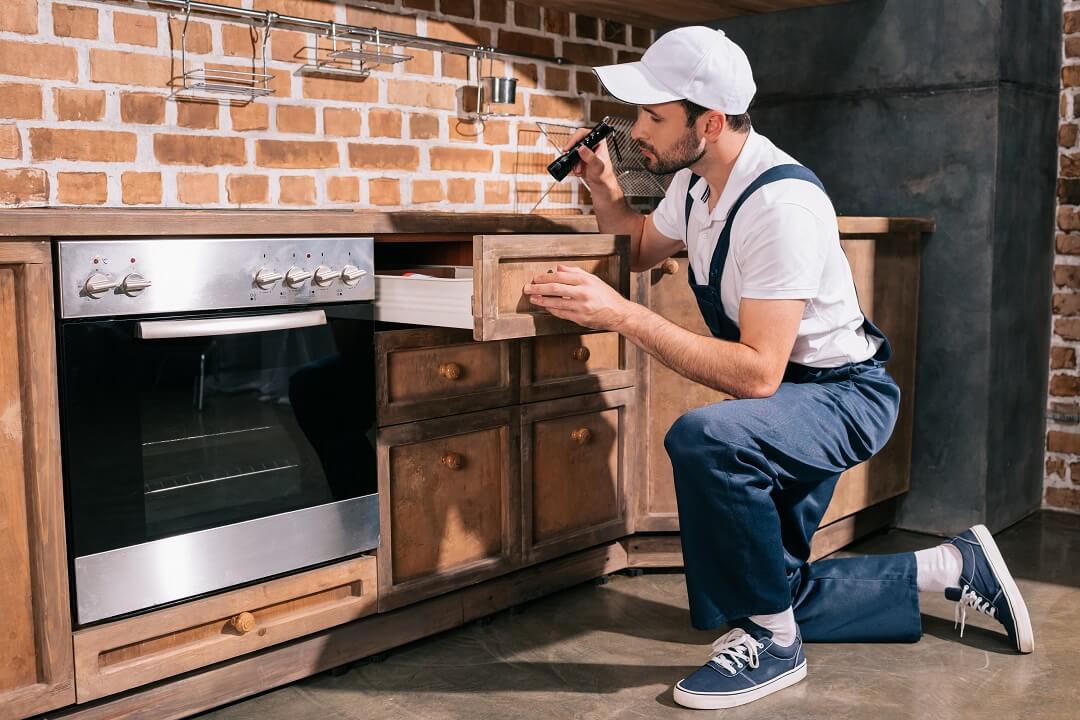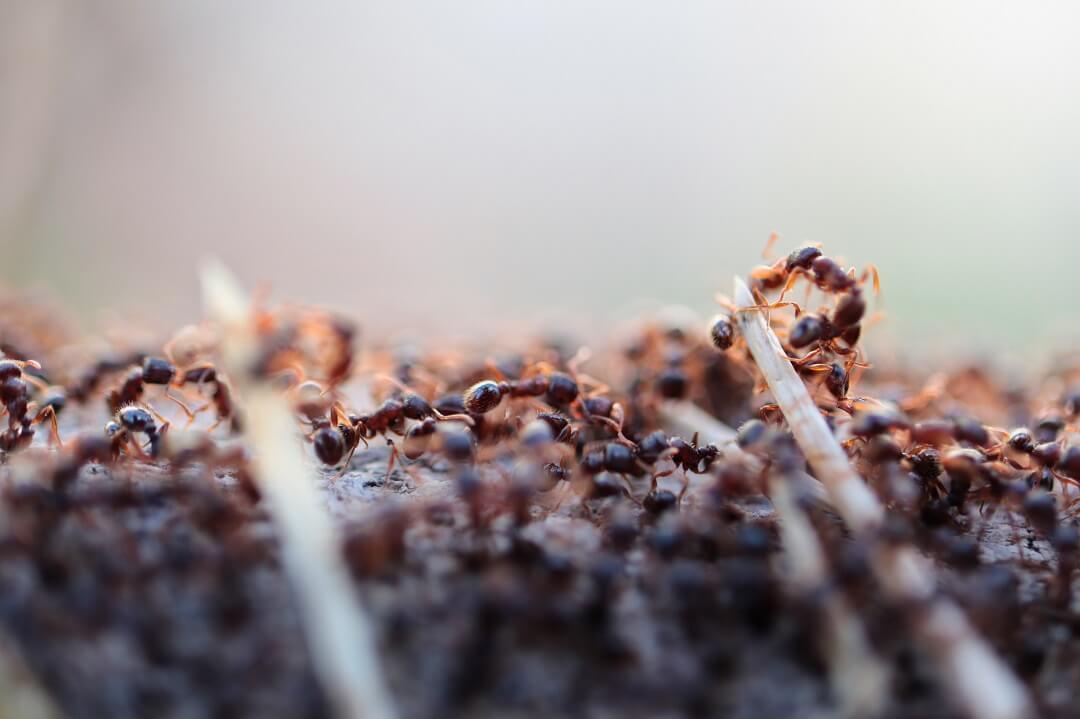When you see a lone ant making its way across your countertop, your first instinct is likely to squish it with your fingers. When you do this, if you smell a rotten coconut-like smell, chances are you have found a Tapinoma sessile or odorous house ant. Unfortunately, seeing one of these ants in your house often means there are many, many more as they are one of the most commonly encountered ants inside the home. But how do you get rid of odorous house ants? While you may want to try at-home applications of bug spray to eliminate your ant problem, that can actually cause the workers to scatter and more nests to form, further worsening your infestation. In most cases, a baiting treatment by professionals is needed to eliminate these pests.
Key takeaways
- Odorous house ants emit a rotten coconut-like smell when crushed, and are commonly found indoors.
- They are tiny, measuring between 1/16 and 1/8 inches in length, with a segmented, oval body shape.
- Their diet includes honeydew and various foods, making any food source in your home susceptible.
- They nest near water sources and can cause food contamination.
Over-the-counter sprays can worsen infestations; professional baiting methods are recommended for elimination. - Prevention includes addressing moisture and food sources, sealing entry points, and keeping firewood away from the home.
Identifying odorous ants
While one of the main characteristics that distinguish the odorous house ant from other ants is the odor they emit when they are crushed, some other distinguishing differences can help you identify if this is the ant invading your home.
Physical appearance
Odorous house ants are brown or black in color and are very tiny, measuring between 1/16 and 1/8 inches in length. They have a segmented, oval body shape with an unevenly shaped thorax area when viewed from the side. They have small antennae and six legs.
Diet
Odorous house ants are always foraging for food, whether during the day or at night. When living outside, their favorite source of food is honeydew, a sticky, high-sugar substance secreted by aphids and other insects. When they move inside, however, they will eat anything, from meats and sugary foods to dairy products and fruits and vegetables. Unfortunately, this means just about any food source in your home is on their menu.
Habitat
Odorous house ants look for nesting areas that are close to sources of water. Outdoors, may mean in wet soil or under areas of firewood where the ground remains damp. Indoors, these ants look for areas near water sources, such as around pipes or in areas of moist wood damaged by termites.
Lifecycle
Like all ants, odorous house ants live in colonies that can grow well into the hundreds of thousands. The lifecycle of these ants follows four stages: egg, larva, pupa, and adult. These ants can live for two to three years in an established colony.
Threats
When it comes to a direct threat, odorous ants can bite but do not really cause any pain or health concerns. However, when an infestation affects your kitchen, these ants can easily contaminate food storage, as well as pet food storage.

Eliminating odorous ants
When it comes to the elimination of odorous ants within your home, over-the-counter sprays and aerosols can actually make the situation worse. In many cases, these sprays do not kill the ants and instead cause them to scatter and create new nests and colonies which only makes your problem worse. In order to truly eliminate these ants, professional ant control that utilizes baiting methods is recommended.
Controlling and preventing odorous ants
When it comes to odorous house ant infestations, your best course of management is prevention. Because these ants are attracted to moisture and food sources, it is best to begin with repairing leaky water pipes or areas of standing water both inside and out and ensuring that food is stored in sealed containers.
Next, you want to address any potential points of entry where the ants can get into your home. Keeping trees and shrubs trimmed away from your roof and walls will reduce the risk of entry, as will sealing any cracks in the foundation, around windows and doors, and around external vents and pipes. Keep any firewood away from the foundation of your home, as these ants like to build nests underneath firewood piles.
Keep those smelly ants away
No homeowner wants to see a line of ants on their floor or countertop and following the prevention tips above can help reduce the risk of you finding one of these smelly odorous house ants in your home. However, if you do spot even one ant, it may be time to call in the professionals.
At Insight Pest Management, we understand the unique behavior of the odorous house ant and work quickly to eradicate the colony within your home, while also helping you identify the points of entry and establishing a prevention plan to keep you ant-free. To learn more about how we can help, schedule a free pest evaluation today.


